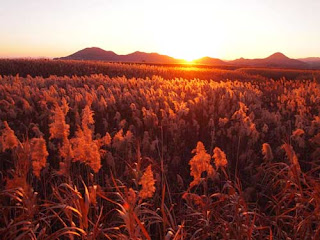Around Suncheon, there is a protected natural area known well as Suncheon bay, ecological park in South Korea. The bay itself is between Goheung and also Yeoso peninsulas. The location is 8 km (5.0 mi) which is from the center of Suncheon. For the mudflats it is 21.6 km2 and the reed beds is around 5.4 km2. From the junction of Isa streams and the Dong, you can find out the beginning of mudflat that is in Suncheon Bay. In fact, it is the widest reed bed in Korea. That is why it is being the popular attraction when red blossoms, red turkeys and white migratory birds come in autumn.
The Suncheon bay actually in front of the South Sea. So, the sea influences the climate in the bay. It could be about 32oF as the coldest temperature in this month. While, the yearly temperature is in range of 57.0oF. It could be said that the temperature range for annual is categorized as the smaller than the other places. In winter, the most popular things people do is about gardening and cultivation as the benefits from the warm temperatures in this season. That is why around the area, there are a lot of fisheries such as octopus, gizzard, gray mullet and also aquaculture industry development in winter.

The formation of Suncheon Bay is actually since 8,000 years ago. Based on geologists studies, the level of the sea increased for around 160 m that caused by last glacial epoch which made the West Sea, the western of Korea turned from the land itself to be the sea. In Suncheon Bay, at first it is covered by earth and sand within brackish water that later being transported by the river so that it formed as an extensive sandbar. For the details of inhabitants around Suncheon Bay, it is actually the house for diverse species which then makes the bay being one of the important areas to conduct research. Because of little pollution and has developed salty swampy land, it produces fresh marine and even being the place for sea plants and various invertebrate animals. The rare birds are also could be found here such as sea gull, white stork, hooded crane, Eastern Great Egret and also black – faced spoonbill. As the ecological park, you can also find out a swamp as the transition between sea and land. It plays the major role that is as “the lungs of the earth” because of life forms live in it.
Image source :
Catbird in Korea


No comments:
Post a Comment